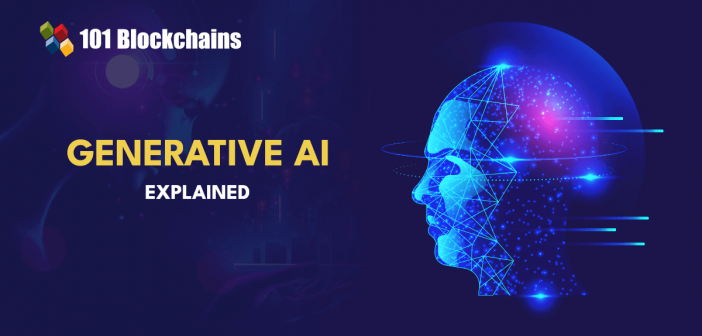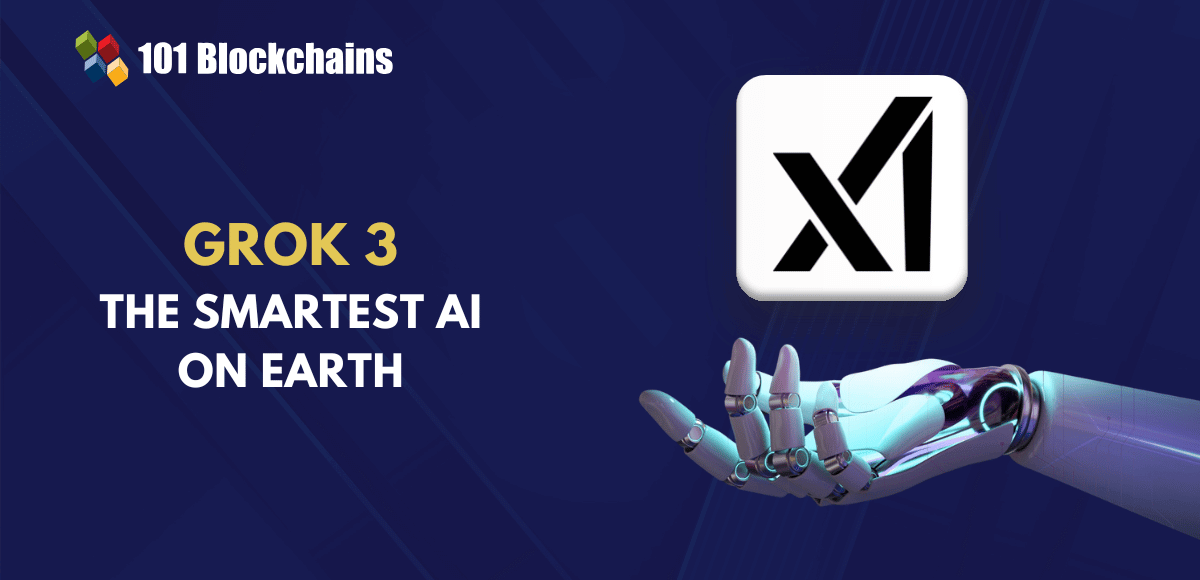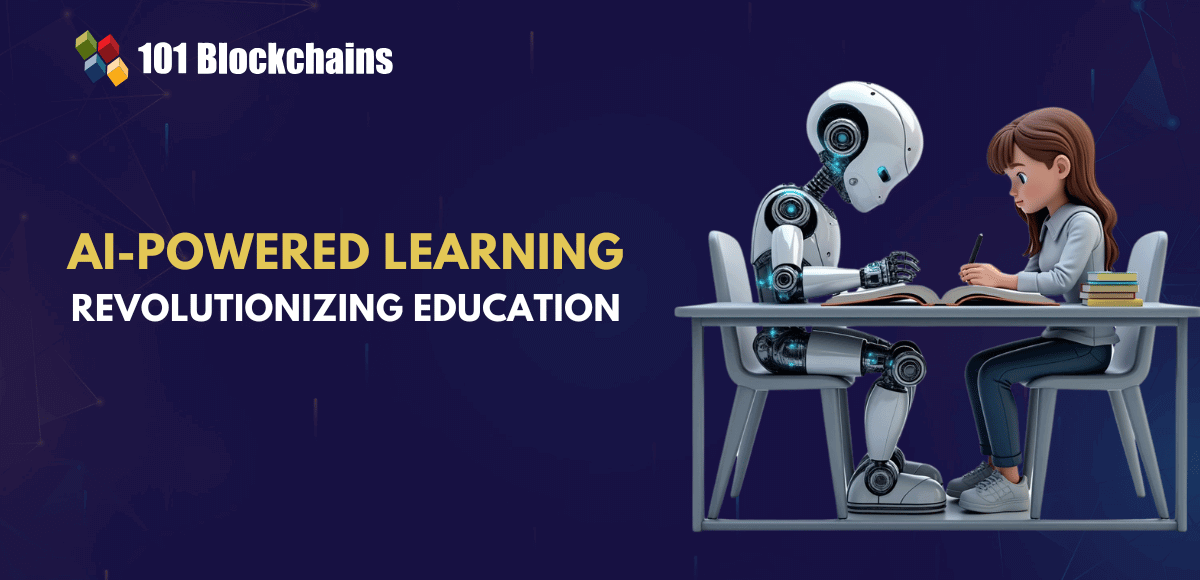Learn how blockchain truly works, master key definitions, and uncover what makes smart contracts so "smart." Dive into the fundamentals, gain valuable insights, and start your blockchain journey today!

AI & ChatGPT
James Howell
on July 26, 2023
Everything You Need to Know About Generative AI
The continuously growing demand for generative AI has created new opportunities for developers and e-commerce businesses. The fundamentals of generative AI explained for beginners would focus on the wonders you could achieve with machine learning algorithms. Generative artificial intelligence involves the generation of realistic, coherent, and almost accurate outputs derived from raw data and training data. You must have come across the descriptions of generative AI tools such as ChatGPT, GitHub Copilot, and DALL-E.
The potential of generative artificial intelligence for transforming content creation across different industries is only one aspect of the capabilities for innovation with generative artificial intelligence. The increasing interest in generative AI models is clearly visible in the millions of dollars being poured into a new wave of startups working on generative AI. Let us learn more about generative Artificial Intelligence in the following post with a detailed explanation of how it works.
Definition of Generative AI
Generative AI is one of the innovative variants of artificial intelligence, capable of creating different types of content, such as audio, text, and images. Another highlight in the responses for “What is Generative AI?” would point to its capabilities for generative synthetic data. The simple user interfaces of generative AI tools for generative images, videos, and text within a few seconds have been fueling the hype around generative AI.
It is also important to note that generative AI has been around for a long time. The introduction of chatbots in the 1960s suggests one of the earliest generative AI examples, albeit with limited functionalities. Subsequently, the arrival of Generative Adversarial Networks, or GANs, provided a new path for improvement of generative AI. GANs are machine learning algorithms that help in creating high-quality synthetic data.
Understand the true potential of generative AI and become an expert with the Generative AI skill path
Why Should You Worry about Generative AI?
The capabilities of generative AI are one of the biggest pointers for thinking about its potential to address some of the existing problems. For example, generative AI applications could help in creating rich academic content. On the other hand, synthetic data by generative AI could present complicated concerns in cybersecurity. At the same time, innovative advancements in generative AI, such as transformers and large language models, have emerged as top trends.
Transformers have been one of the pivotal elements in encouraging the mainstream adoption of artificial intelligence. Transformers are a machine learning approach that allows AI researchers to create larger models without the necessity of labeling all the data in advance. Therefore, researchers can train new models on massive collections of text, which would ensure better accuracy and depth in the operations. The most promising highlight in a generative AI overview would also refer to transformers which can enable models to track connections between two different pages, books, and chapters.
Another potential use case of generative AI refers to large language models or LLMs, which can be trained on billions and trillions of parameters. LLMs have created a new era for helping generative AI models to create engaging text and realistic images. On top of it, the developments in multimodal AI could help teams in generating content through different types of media.
However, generative AI is still in the early stages and will take some time to mature. The new implementations of generative artificial intelligence have been exhibiting problems with bias and accuracy. On the other hand, the inherent qualities of generative AI have the potential to change the fundamental tenets of business.
Take your first step towards learning about artificial intelligence through AI Flashcards
Use Cases of Generative AI
The next important highlight for understanding the potential of generative artificial intelligence would point at their use cases. You must go through different generative AI examples and applications to find out more details about their utility. ChatGPT is one of the popular examples of generative AI.
Similarly, you can find many other applications, frameworks, and projects in the world of generative artificial intelligence. Conventional AI systems rely on training with large amounts of data for identifying patterns. Generative artificial intelligence takes one step ahead with complex systems and models, generating new and innovative outputs, in the form of audio, images, and text, according to natural language prompts.
Some of the common applications of generative AI models are visible in different areas, such as text generation, image generation, and data generation. Here is an outline of the different examples of applications of generative AI in each use case.

-
Text Generation
Text generation has been one of the prominent topics of research in the field of AI. Most recently, AI researchers have started training generative adversarial networks or GANs for producing text that appears similar to human speech. ChatGPT is the best example of using generative artificial intelligence in text generation.
-
Image Generation
The use cases of generative AI explained for beginners would also turn attention toward image generation. You can rely on generative AI models to create new images by using natural language prompts. Text-to-image generation protocols rely on creating images that represent the content in a prompt. The most popular example of text-to-image generation protocol is DALL-E 2.
-
Video Generation
Examples of generative AI also refer to tools like Stable Diffusion, which can create new videos from existing videos. The stable-diffusion-videos project on GitHub can provide helpful tips and examples for creating music videos. You can also find examples of videos that can transition between text prompts by using Stable Diffusion.
Want to understand the importance of ethics in AI, ethical frameworks, principles, and challenges? Enroll Now in Ethics Of Artificial Intelligence (AI) Course!
-
Language Translation
Natural-language understanding (NLU) models included with generative artificial intelligence have gradually gained popularity for providing real-time language translations. Language translation tools provide answers to “What is Generative AI?” and help in breaking language barriers. It can also help in increasing the scope for accessibility of the customer base by providing necessary support and documentation in native languages.
Complex, deep learning algorithms ensure that generative artificial intelligence can understand the context of source text, followed by recreating the sentences in another language. The use cases of language translation are applicable for coding languages, with translation of specific functions among different languages.
-
Code Development
Another noticeable aspect in the use cases of generative AI refers to the applications in code development. Aspiring developers can use a generative AI overview to learn about the best practices for generating code. You don’t have to look all over the internet or developer communities to learn about code examples. The working of GitHub Copilot showcases how it leverages the Codex model of OpenAI for offering code suggestions. However, it is important to review code suggestions before deploying them into production.
-
Data Generation
The applications of generative AI would also focus on generating new data or synthetic data alongside ensuring augmentation of existing data sets. It can help in generating new samples from existing datasets for increasing the size of the dataset and improving machine learning models.
At the same time, it offers the assurance of adding a layer of privacy without relying on real user data for powering AI models. The outline of generative AI applications in data generation focus on synthetic data generation for creating meaningful and useful data. Examples such as self-driving car companies use data generation capabilities of generative artificial intelligence for preparing vehicles to work in real-world situations.
Become a master of generative AI applications and develop expert-level skills in prompt engineering with Prompt Engineer Career Path
Working of Generative AI
The responses to ‘How does generative AI work’ would also provide a clear impression of the ways in which generative models are neural networks. Generative Artificial Intelligence utilizes the networks for identifying patterns from large data sets, followed by generating new and original content. How are neural networks useful for generative artificial intelligence? Neural networks work with interconnected nodes that resemble neurons in the human brain and help in developing ML and deep learning models. The models use a complex arrangement of algorithms for processing large quantities of data, including images, code, and text.
Training of the neural networks focuses on adjustment of weights or parameters of connection between neurons. It helps in reducing the difference between the desired and predicted outputs, thereby allowing the network to learn from their mistakes. As a result, the network could learn from its mistakes and provide accurate predictions on the basis of data. The outline of generative AI examples would also highlight the role of algorithms. Generative Artificial Intelligence algorithms help machines in learning from data and also optimize the accuracy of outputs for making the necessary decisions.
Development of generative AI models is significantly complex due to the high amount of computation power and data required for creating them. Individuals and organizations would need large datasets for training the generative artificial intelligence models. However, generation of high-quality data with such models can be expensive and time-consuming. Here is an overview of how Large Language Models and Generative Adversarial Networks work.
-
Large Language Models
Large Language Models are machine learning models which can help in processing and generating natural language text. The noticeable advancement in creating large language models focuses on access to large volumes of data with the help of social media posts, websites, and books. The data can help in training models, which can predict and generate natural language responses in different contexts.
-
Generative Adversarial Networks
Generative Adversarial Networks are the most popular models among generative AI examples, as they use two different networks. GANs feature two different variants of neural networks, such as a discriminator and a generator. The generator network helps in creating new data, and the discriminator features training for distinguishing real data from training set and data produced by generator network.
In the training process, generator can attempt to create data to trick the discriminator into assuming that the data is real. On the other hand, the adversarial process would continue until the generator could produce data that you could distinguish from real data in the training set.
Want to develop the skill in ChatGPT to familiarize yourself with the AI language model? Enroll now in ChatGPT Fundamentals Course
-
Transformer-based Models
Transformer-based models feature neural networks which work by learning context and meaning for tracing relationships among sequential data. As a result, the models could be exceptionally efficient in natural languages processing tasks such as machine translation, question responses, and language modeling. Transformer-based generative AI models have proved useful for renowned popular language models, such as GPT-4.
-
Variational Autoencoder Models
The variational autoencoder models or VAEs are similar to GANs and feature two unique neural networks, such as encoders and decoders. VAEs can utilize large volumes of data, followed by compression of the data into a smaller representation. It can help in creating new data, which is the same as the original data. VAEs are useful for image, audio, and video generation.
Want to understand the importance of ethics in AI, ethical frameworks, principles, and challenges? Enroll now in the Ethics Of Artificial Intelligence (AI) Course
Real-World Applications of Generative AI
The outline of answers for “What is Generative AI?” would also draw references to its real-world applications. First of all, generative artificial intelligence could help in serving advantages for coding as the tools can help in automation of different repetitive tasks, such as testing. GitHub features its individual artificial intelligence powered pair programmer, such as GitHub Copilot, which utilizes generative artificial intelligence to provide developers with suggestions for code development.
The different examples of generative AI applications would also point toward gaming. Generative Artificial Intelligence could help in creating new storylines, characters, design components, and other elements of games. For example, some developers have been working on new projects where every component of the game is created by AI.
Gaming studios can develop new and appealing content for their users without any rise in developer workload. Similarly, generative AI could also help in improving the results of web design projects. Generative artificial intelligence tools could also help in automation of design process alongside saving a significant amount of resources and time.
Want to learn about the fundamentals of AI and Fintech, Enroll now in AI And Fintech Masterclass
Conclusion
The outline of different applications of generative AI and its working provide a clear impression of how it works. You can rely on generative AI for creating games, text, audio, video, and web applications. The explanation of how does generative AI works would help in identifying the utility potential of generative AI. You should also learn where you can apply generative artificial intelligence with different approaches.
On the other hand, Generative Artificial Intelligence is still in the initial stages and would have to overcome different challenges. For example, it would have to overcome the issues in accuracy and ethical concerns regarding the use of generative AI. Learn more about the basic concepts of Generative Artificial Intelligence to extract its full potential. Find more information on how it can help in addressing new use cases of artificial intelligence right now.






